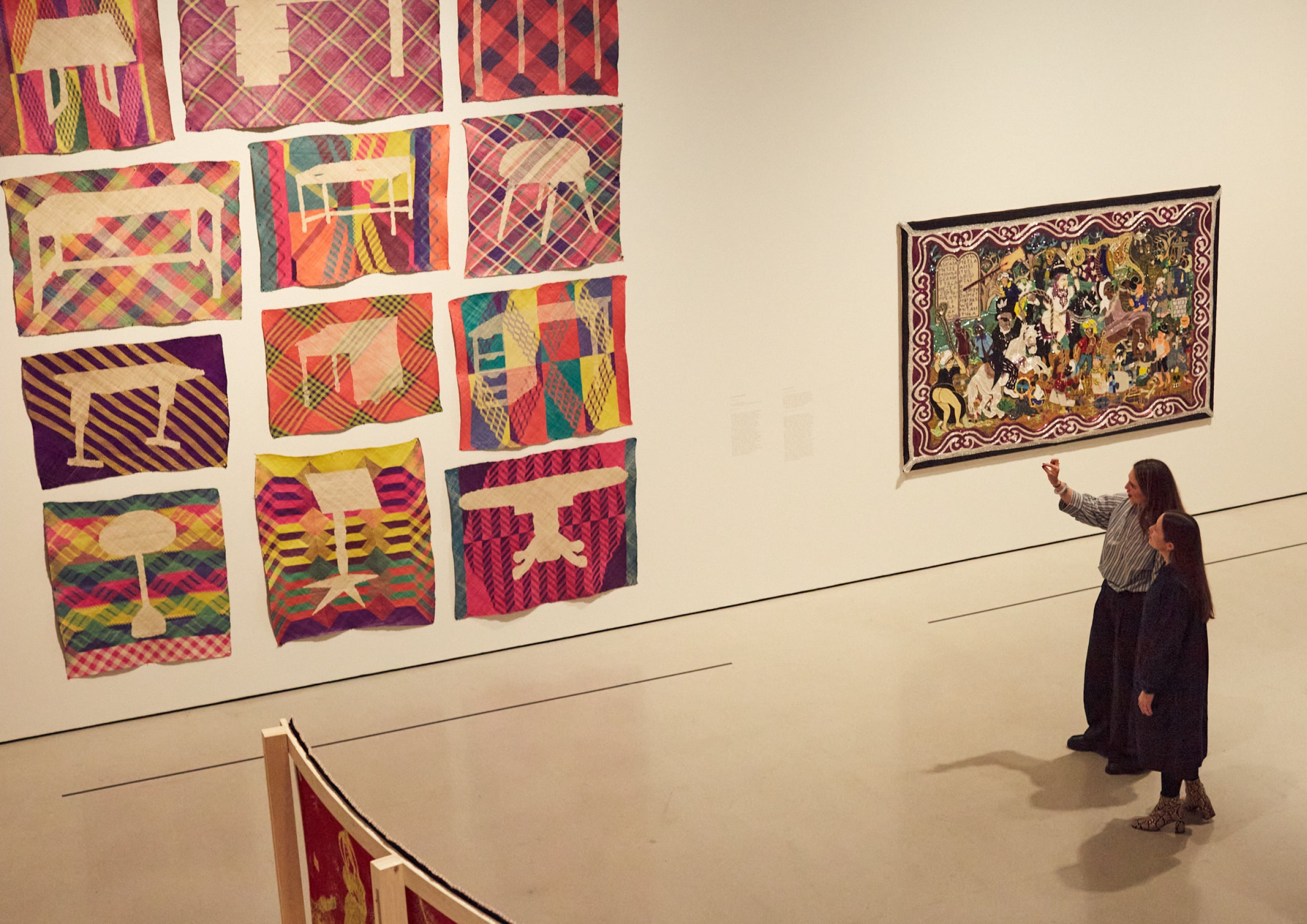
Cloth bundles wrapped in brightly coloured bedspreads, traditionally used in Korea to transport everyday objects. Cacti made from discarded US border patrol uniforms, embroidered with stories that reference US-Mexican migratory politics. A block-printed piece that delves into the complex history of indigo dye. And patchwork pictures, known as arpilleras, sewn in the 1970s during Pinochet’s dictatorship in Chile, which were rolled up and smuggled out of the country to inform outsiders about the human rights violations taking place. Although perhaps at first seemingly unconnected, all of these installations explore the transformative and subversive potential of textiles – and are part of a major new exhibition at the Barbican in London.
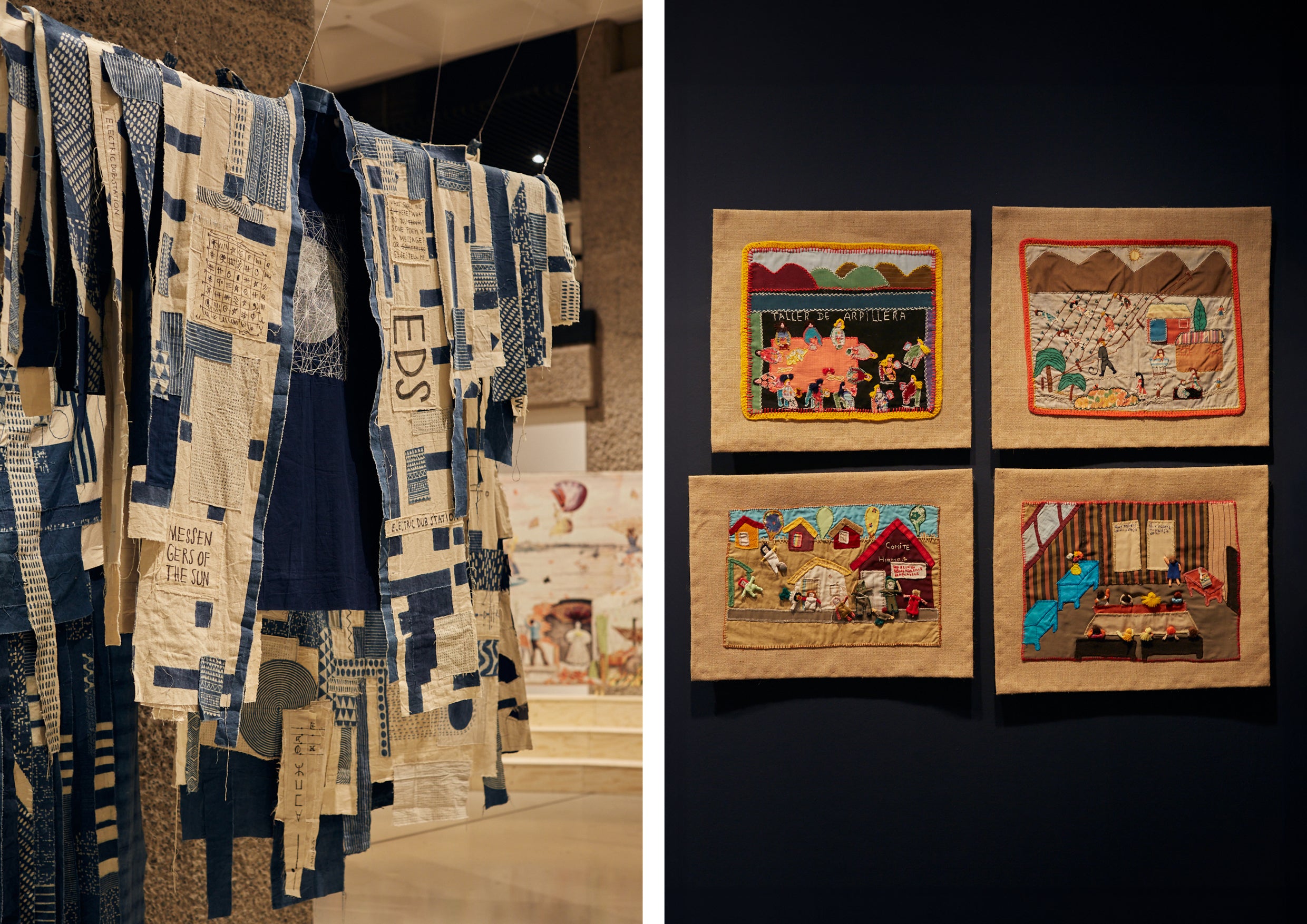
Curated by Lotte Johnson and Wells Fray-Smith, and in collaboration with the Stedelijk Museum in Amsterdam, Unravel: The Power and Politics of Textiles in Art puts the spotlight on 50 international practitioners from the 1960s to today. “The idea came about in 2020 when collectively we were noticing how many contemporary artists were incorporating textiles, fibres and thread,” recalls Lotte. “This was with the backdrop of Covid-19 and unrest across the world. We were asking ourselves, why are artists turning to such a tactile medium at a time of crisis.”
Coincidentally, the 1960s was also a moment of global turmoil, as well as being the decade when the fibre art movement flourished in the US. “Textiles have often been thought of as two-dimensional wall hangings but at that time it started to become sculptural as artists pushed the boundaries,” confirms Wells, who joined the curatorial team from the Whitechapel Gallery last year.

Rather than a chronological order, the show is organised into six thematic sections. “From the beginning, the artists led our research,” explains Lotte, who has worked at the Barbican for nine years. “Between us, we visited exhibitions and biennials and did studio visits. Plus, there was lots of scholarly and historical research, because, of course, the project stands on the shoulders of many other creators who come before us. To have plural curatorial voices was also important; it really added to the richness of the project.” The net was cast deliberately wide, not only looking at those who work with textiles but anyone bringing fibre and thread into their practice in experimental ways. “We started finding that there were recurring and persistent themes in the artists’ work – for instance, challenging binary ideas of gender and sexuality, or looking at boundaries and systems of power imposed by literal borders and how a stitch can be an evocative means to question that,” she says.
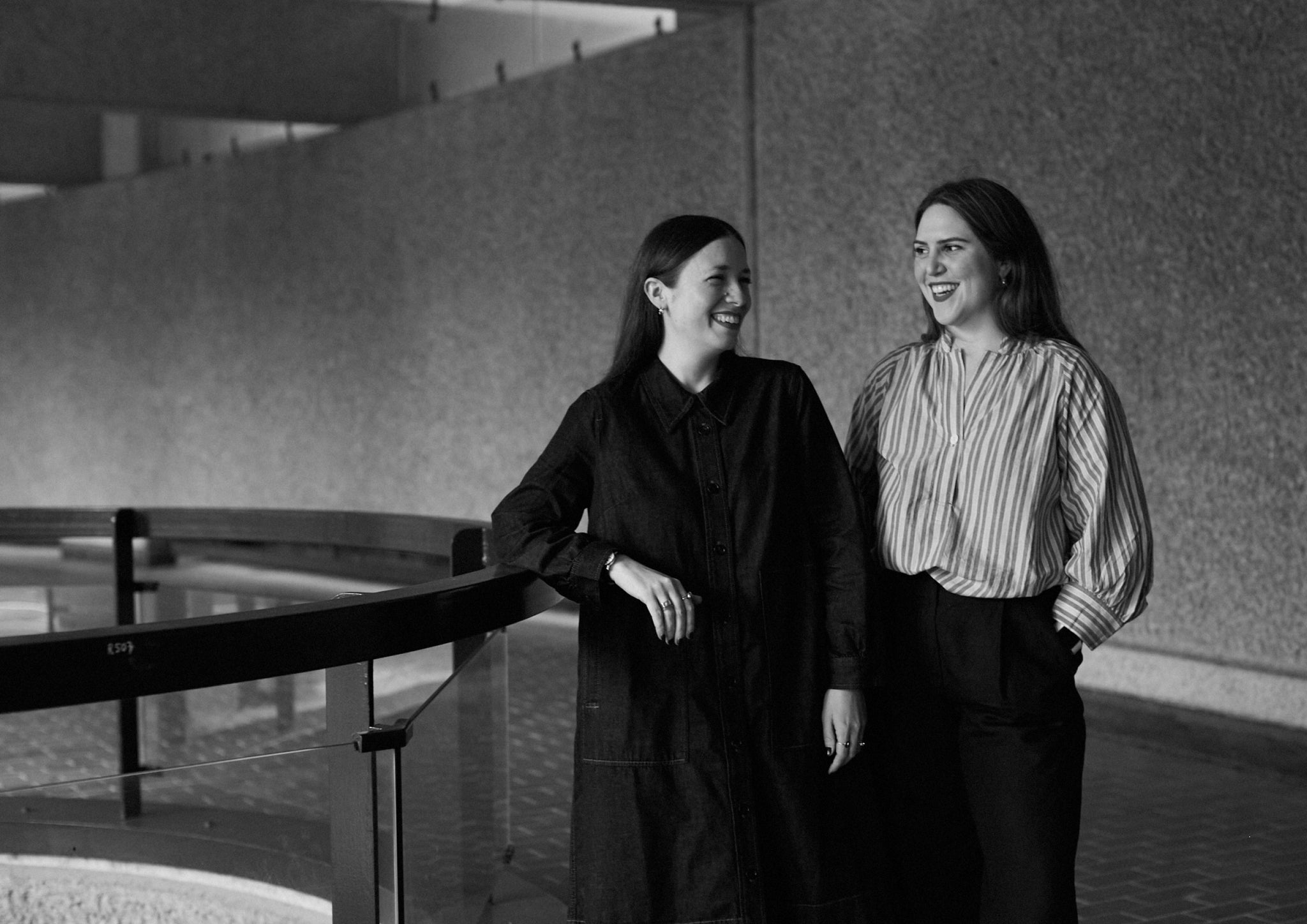
Throughout, and especially in the Fabric of Everyday Life section where artists make works using second-hand clothing that hold personal memories, the exhibition aligns with TOAST’s circular approach to keeping materials and garments in use for longer through programmes like Renewed, Reworn, Repair and Exchange. Other segments include Wound and Repair, which looks at how, in the face of physical or social wounds, stitches can be a metaphor for healing; and Subversive Stitch, highlighting how textiles were previously dismissed as craft rather than fine art, and domestically often undertaken by women. “Embedded in a thread or a fibre or a material’s history are all these ideas of gender, marginalisation, and trade,” says Wells. “In the medium itself there are stories and messages, and artists play with that consistently throughout the show.”
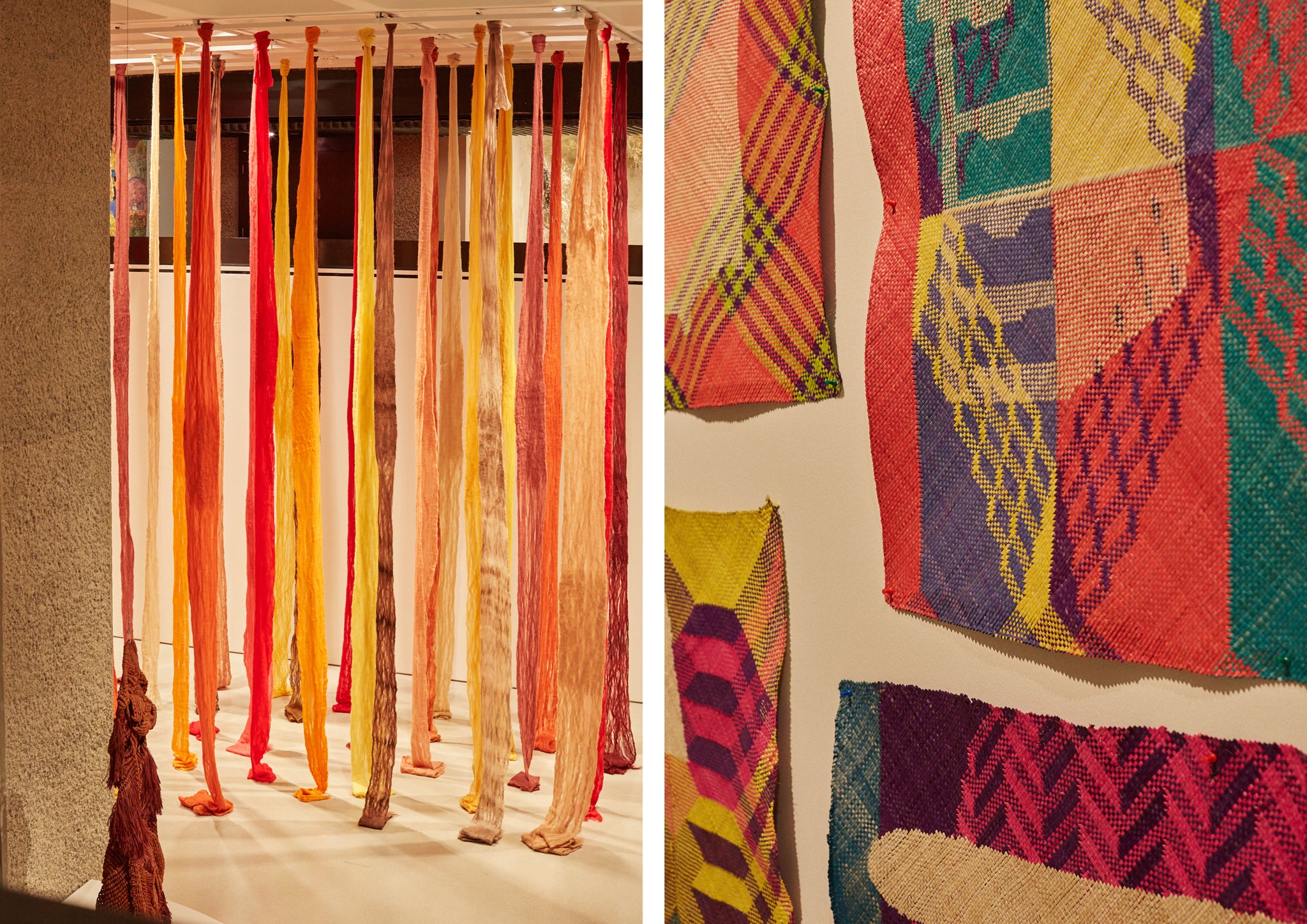
When considering how to arrange the exhibition, the architecture of the two-level gallery itself was also key. “The Barbican space is really robust with a strong character, and you have to work with it rather than against it,” continues Lotte. “We were both excited by the possibility that we could leave the downstairs completely open to become a sculptural landscape. There’s no intervening architecture and it’s the works themselves that offer a choreography and guide visitors through the gallery.”

Here, Ancestral Threads focuses on textiles as a way of communicating in indigenous communities. It includes Chilean artist Cecilia Vicuna’s Quipu Austral, lengths of knotted unspun wool that stream down from the ceiling where the knots are a system of writing; US artist Jeffrey Gibson’s garments that draw on his Choctaw-Cherokee heritage; and Ugandan Acaye Kerunen’s palm leaf and raffia composition which calls attention to her inherited knowledge of making and the impact of climate change on the wetlands where the materials grow. “One guiding principle of the show is that we wanted people to experience it with their bodies. so in many instances visitors can walk around the installations and be in and amongst them,” says Wells, citing the textile samples available to touch as another tactile way to engage visitors.
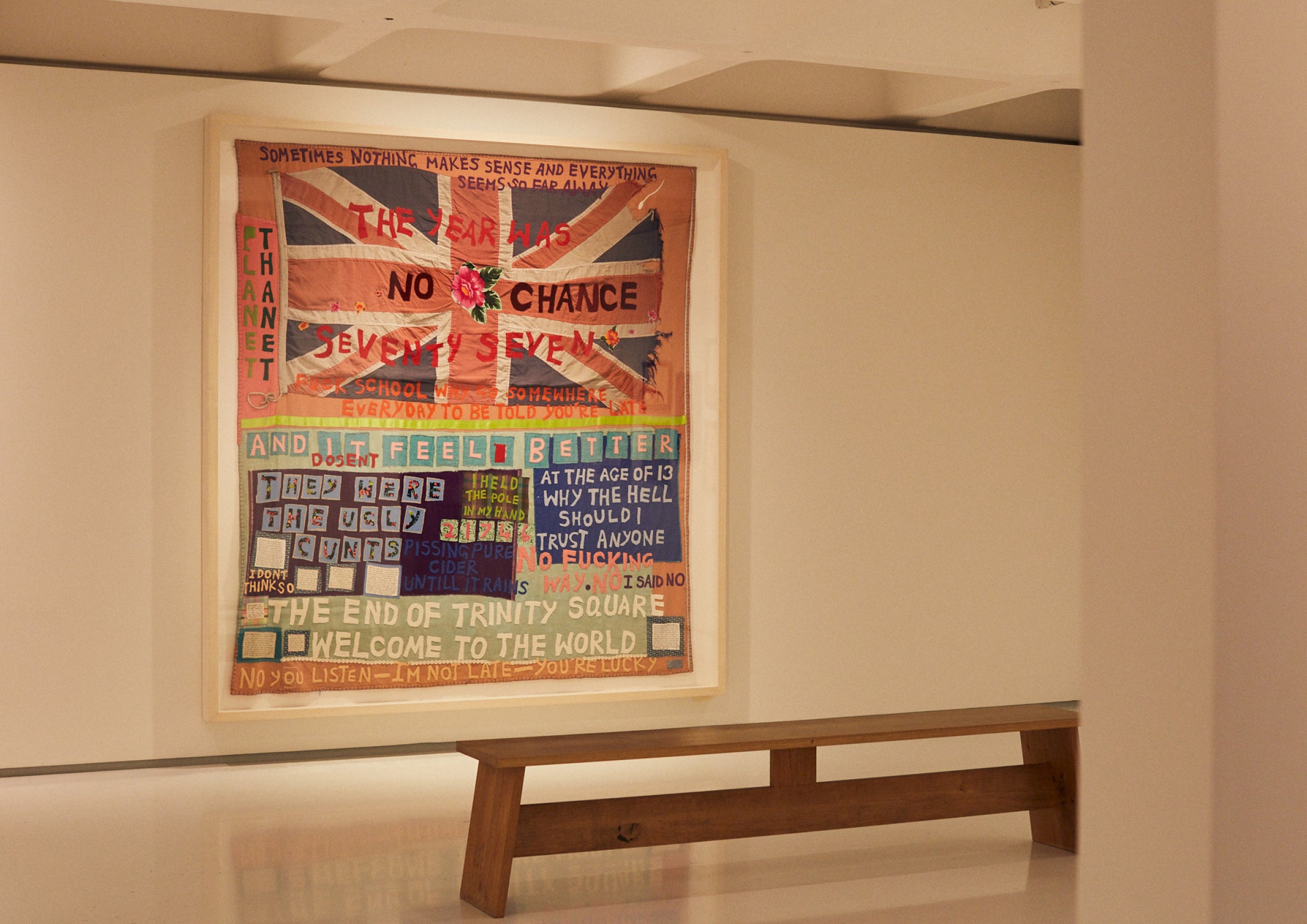
Interestingly, both curators can pinpoint visiting specific seminal exhibitions that shaped their careers. For Wells, it was seeing Roni Horn’s work at the Whitney Museum of American Art in New York, at age 16; for Lotte, a Serpentine show in 2000 dedicated to the work of Cuban-born artist Felix Gonzalez-Torres who died of aids related illnesses left a lasting impression. ‘“I’d never seen an artwork that had such political power. It revealed to me the human impact that art can have. Thinking back to that show, I have thought, I want to make exhibitions like this,” she says. “The resounding hope with any show is that people are stimulated and come out feeling challenged, invigorated or inspired by the work and the ideas that have come out of the experience.”
Join us at our TOAST Circle Pop-Up at the Barbican Centre, London from Friday 17 - Monday 27 May. Discover a seven-piece capsule collection created in partnership with fashion designer Phoebe English and participate in our programme of creative textile and repair workshops.
We continue to support the dialogue around the Unravel exhibition at the Barbican and respect both the artists who have chosen to withdraw their works and those who continue to exhibit.
Unravel: The Power and Politics of Textiles in Art runs until 26 May at the Barbican.
Lotte wears the TOAST Point Collar Indigo Denim Shirt Dress and Wells wears the Cotton Stripe Raglan Shirt.
Words by Emma Love.
Photography by Lesley Lau.
Add a comment
1 comment